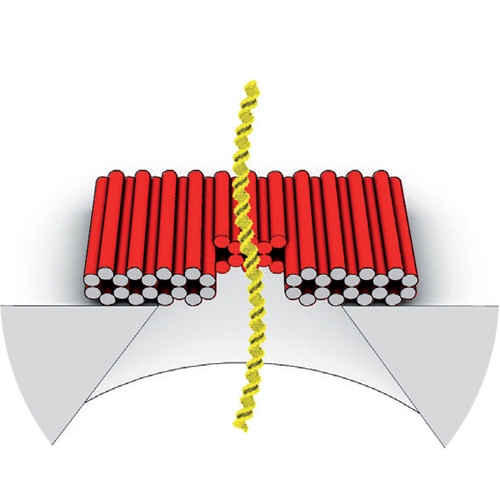DNA Origami Gatekeepers for Solid-State Nanopores
04-Apr-2012
Angewandte Chemie, 2012, DOI: 10.1002/anie.201200688, published on 04.04.2012
Angewandte Chemie, online article
Angewandte Chemie, online article
Molecular self-assembly with DNA enables the construction of soluble objects with nanometer to micrometer scale absolute dimensions and custom chemical features, including crystals, patterns, bricks, boxes, and curved shapes, that can open novel paths to scientific discovery. Herein, we report on DNA nanoplates for nanopore-based sensing approaches. Nanopores in biological or solid-state membranes offer great potential for label-free single-molecule sensing applications. Biological nanopores, such as alpha-hemolysin, can be customized within the limits of protein engineering. Artificial nanopores in solid-state membranes can be made with user-defined dimensions, but chemical modifications require substantial effort. A challenge in the field is to gain control over both the geometrical and chemical specifications of nanopores. We hypothesized that using DNA-based nanoplates as covers for solid-state nanopores could provide a route for meeting this challenge.











